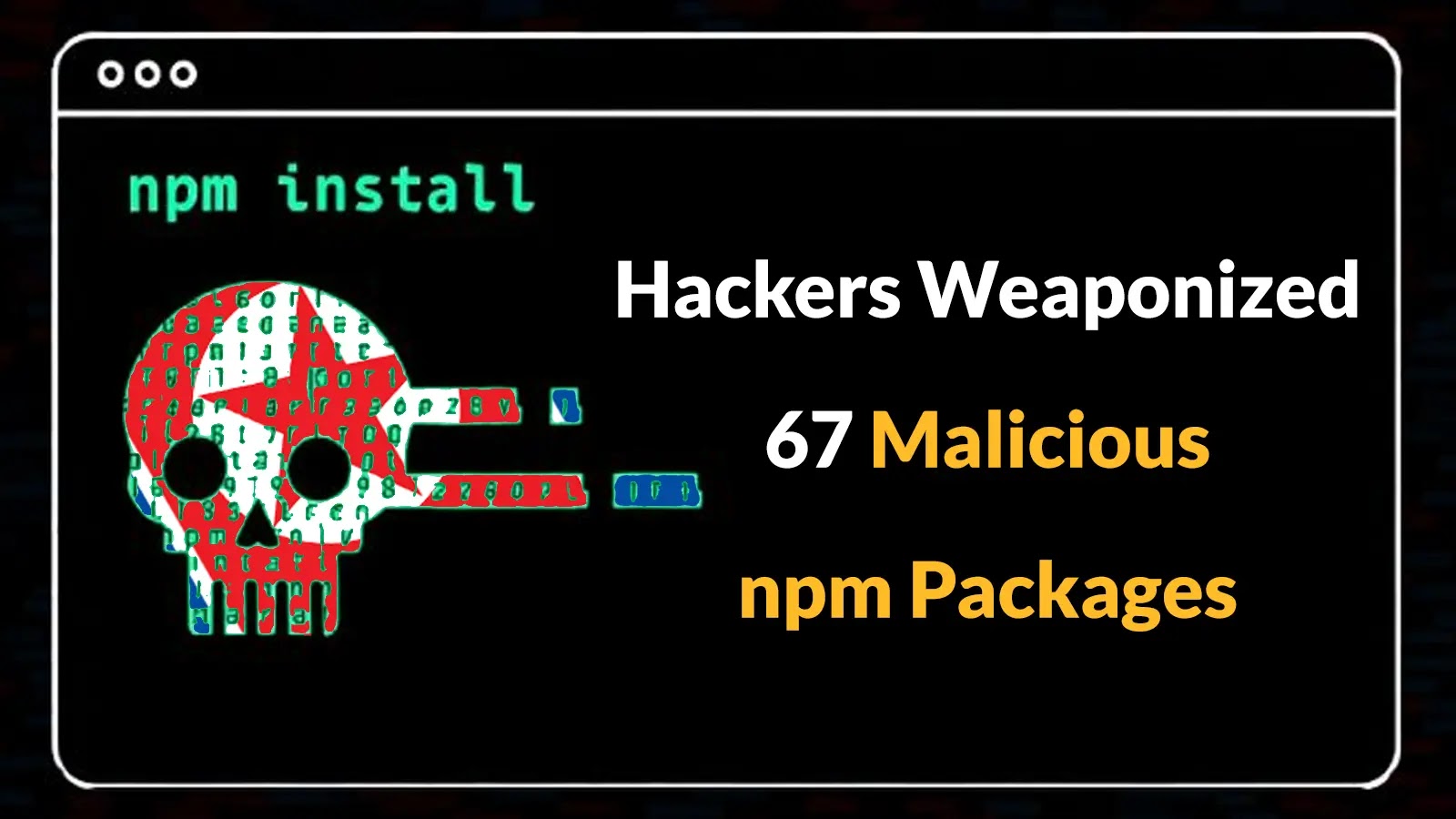
North Korean Hackers Weaponized 67 Malicious npm Packages to Deliver XORIndex Malware
North Korean Hackers Escalate Software Supply Chain Attacks with XORIndex Malware via Malicious npm Packages
The digital defense perimeter is constantly under assault, and the latest offensive highlights a particularly insidious tactic: the weaponization of open-source software repositories. North Korean threat actors have significantly amplified their software supply chain attack capabilities, deploying a staggering 67 malicious npm packages. These packages, designed to deliver the previously unreported XORIndex malware, collectively amassed over 17,000 downloads before their detection, underscoring the critical need for vigilance in the software development ecosystem.
This incident represents a significant escalation of the ongoing “Contagious Interview” operation, demonstrating a refined approach to exploiting popular developer resources. As cybersecurity professionals, developers, and IT leadership, understanding the nuances of this attack and implementing robust preventative measures is paramount.
The Evolving Threat Landscape: Contagious Interview & Software Supply Chain
The “Contagious Interview” operation is not new, but this latest iteration showcases a clear shift in tactics and an expansion of malicious infrastructure. Traditionally, these campaigns might rely on a few high-impact packages or more targeted spear-phishing. The sheer volume of 67 distinct packages suggests an attempt at broader reach and a more diffuse attack surface. Software supply chain attacks are particularly effective because they leverage trusted components within the development lifecycle. Developers inadvertently incorporate malicious code, which then propagates down the supply chain, affecting numerous downstream applications and users.
This method bypasses many traditional perimeter defenses, as the malicious code is introduced from seemingly legitimate sources within the development environment itself. It highlights a common vulnerability: the implicit trust placed in third-party dependencies.
Introducing XORIndex: A New Malware Loader in the Arsenal
A critical discovery in this campaign is the identification of XORIndex, a previously undocumented malware loader. Loaders are typically designed to fetch and execute secondary malicious payloads, often providing initial access or establishing persistence. The name “XORIndex” suggests the use of XOR encryption or obfuscation techniques, a common method for evading detection by signature-based antivirus solutions and complicating reverse engineering efforts. This new loader operates alongside the existing HexEval Loader infrastructure, indicating a coordinated effort to expand and diversify their attack tools.
- XORIndex: A novel malware loader, likely employing XOR-based obfuscation.
- HexEval Loader: Existing malicious infrastructure used in previous “Contagious Interview” operations.
The dual use of these loaders signifies a more resilient and adaptable attack framework, capable of delivering various final payloads depending on the target system and objectives.
The Mechanics of Compromise: How Malicious npm Packages Work
National Package Manager (npm) is a package manager for the JavaScript runtime Node.js, and it’s an indispensable tool for millions of developers worldwide. Its vast ecosystem, while incredibly powerful, also presents a significant attack surface. Malicious npm packages typically operate by:
- Package Naming Confusion: Using names similar to legitimate popular packages (typosquatting) or promising enticing, yet false, functionalities.
- Dependency Confusion: Exploiting misconfigurations where private packages in an organization’s internal registry can be overridden by public npm packages with the same name.
- Malicious Code Injection: Embedding harmful code within package scripts (e.g., `preinstall`, `postinstall`) that execute automatically during installation.
In this specific campaign, the 67 packages leveraged a combination of these tactics to achieve their 17,000+ download count, demonstrating the effectiveness of high-volume, low-profile attacks.
Remediation Actions for Developers and Security Teams
Protecting against these sophisticated supply chain attacks requires a multi-layered approach. Here’s actionable advice for developers, IT professionals, and security analysts:
- Implement Software Supply Chain Security Tools: Utilize tools that scan for known vulnerabilities and malicious code within your dependencies.
- Strict Package Auditing: Before incorporating any new package, especially from unknown or less reputable sources, thoroughly audit its code, review its release history, and check for any suspicious behavior.
- Dependency Verification: Always verify the authenticity and integrity of packages. Use checksums or cryptographic signatures where available.
- Restrict npm Permissions: Configure npm with the principle of least privilege. Avoid running `npm install` as root or with elevated permissions unless absolutely necessary.
- Network Traffic Monitoring: Monitor outbound network connections from development environments and CI/CD pipelines for unusual or suspicious activity. This can help detect command-and-control (C2) communication.
- Regular Security Training: Educate developers on the risks of supply chain attacks, social engineering tactics, and safe coding practices.
- Threat Intelligence Feeds: Subscribe to and actively monitor threat intelligence feeds from reputable cybersecurity vendors and organizations to stay abreast of the latest Tactics, Techniques, and Procedures (TTPs) used by threat actors like the North Korean groups.
- Source Code Scanners (SAST/DAST): Integrate Static Application Security Testing (SAST) and Dynamic Application Security Testing (DAST) into your CI/CD pipeline to identify vulnerabilities in your own code and its dependencies.
Tools for Detection and Mitigation
| Tool Name | Purpose | Link |
|---|---|---|
| Snyk | Dependency scanning, vulnerability management, license compliance. | https://snyk.io/ |
| Dependabot (GitHub) | Automated dependency vulnerability scanning and pull request generation. | https://docs.github.com/en/code-security/supply-chain-security/keeping-your-dependencies-updated-and-secure/about-dependabot-security-updates |
| npm audit | Built-in npm command for vulnerability reporting on dependencies. | https://docs.npmjs.com/cli/v9/commands/npm-audit |
| OWASP Dependency-Check | Identifies project dependencies and checks for known vulnerabilities. | https://owasp.org/www-project-dependency-check/ |
| Sonatype Nexus Lifecycle | Open source component analysis and policy enforcement. | https://www.sonatype.com/nexus/lifecycle |
Conclusion: Strengthening the Software Supply Chain
The North Korean actors’ latest campaign, leveraging 67 malicious npm packages to distribute XORIndex malware, serves as a stark reminder of the persistent and evolving threat posed by software supply chain attacks. The “Contagious Interview” operation’s expansion underscores the importance of a proactive and vigilant approach to cybersecurity. It’s imperative for organizations to shift from reactive incident response to robust preventative measures, ensuring the integrity and security of their development pipelines and the open-source components they rely upon. The ongoing efforts by threat actors to compromise fundamental development tools necessitate heightened scrutiny, continuous monitoring, and collaborative intelligence sharing across the cybersecurity community.





